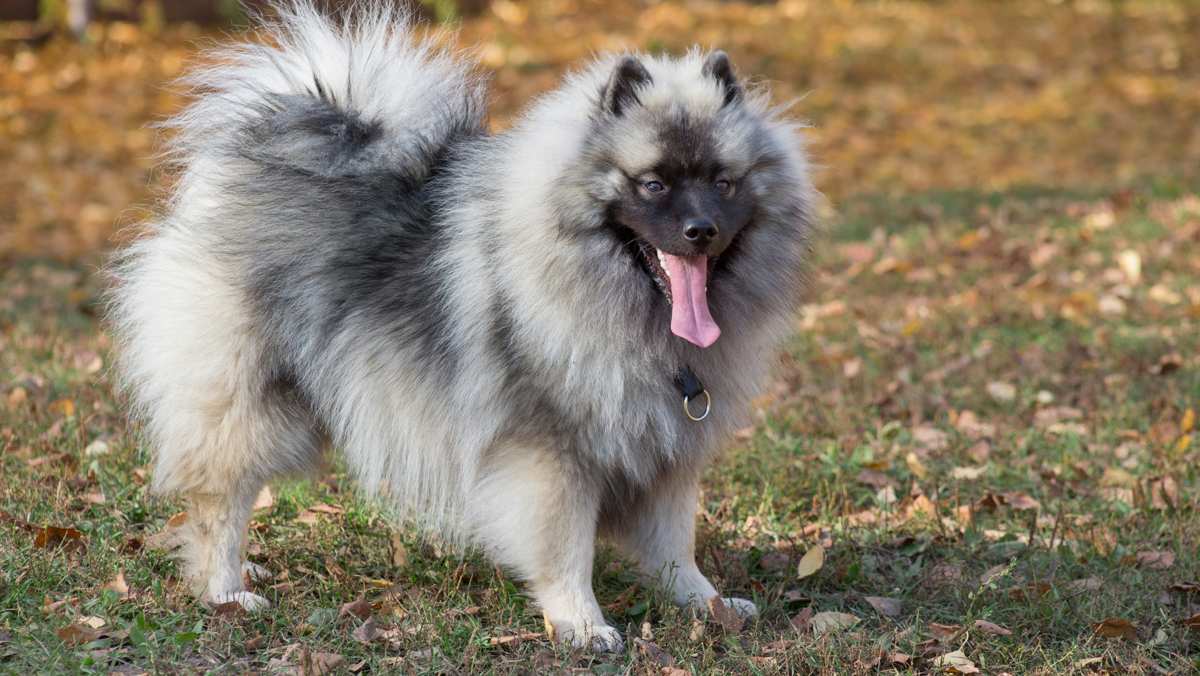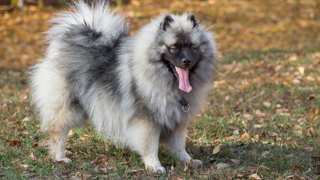Over the last two centuries, various clubs have quarreled regarding what constitutes a Spitz, a German Spitz, and a Pomeranian. Unraveling the history of what was and what is a German Spitz — or even variations therein and similar breeds such as the Pomeranian — can be extremely difficult. Even current varieties may or may not be acknowledged by some kennel clubs and breeders. The Fédération Cynologique Internationale (FCI) formally recognizes five size varieties: Wolfspitz, Giant Spitz, Medium size Spitz, Miniature Spitz, and the Toy Spitz (which is recognized by the AKC as a separate breed, the Pomeranian).
While the Standard and Toy German Spitzes tend to have a wide variety of coat colors, the giant typically comes in just three colors: black, brown, or white.
Most everyone familiar with the German Spitz breed, however, will agree that there are three basic types: giant, standard, and toy (or miniature). The giant weighs about 38 to 40 pounds, the standard weighs from 23 up to 41 pounds, and the toy is 18 to 22 pounds. Weight, however, is rarely considered in determining German Spitz variations. Height is the metric universally used. Giants are 16 to 17 inches, the Standard Spitzes are 12 to 15 tall, and the toys are 9 to 11 inches. The wolf types are those that are 18 to 20 inches or higher.
Until the end of the 19th century, the Pomeranian was a Toy German Spitz. The standard variety has always been around and was used as a basic working dog on farms. The Giant German Spitz is essentially the largest of the types, although there are some who identify an even larger variation: the Wolf German Spitz. There are also those breeders who claim there is the Dwarf German Spitz, which is smaller than the toy type.
Just as you may imagine, the types of German Spitz have German names. The toy is also called the Klein; the standard is known as the Mittel (medium German Spitz); and the Giant, in German, is named the Deutscher Grossspitz. The wolf variety is the same as the Keeshond, and the Dwarf Spitz is sometimes identified as the Zwergspitz.

